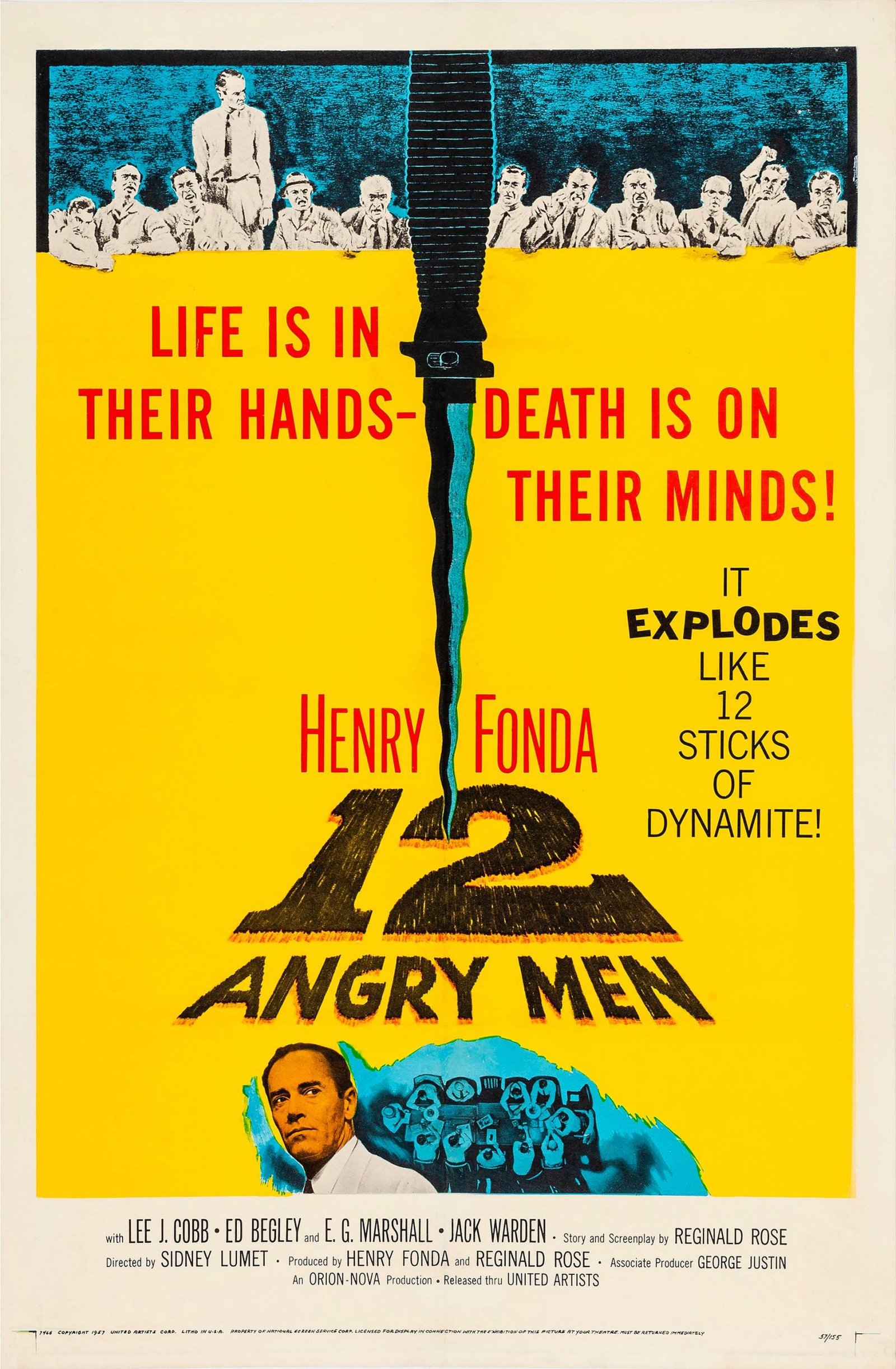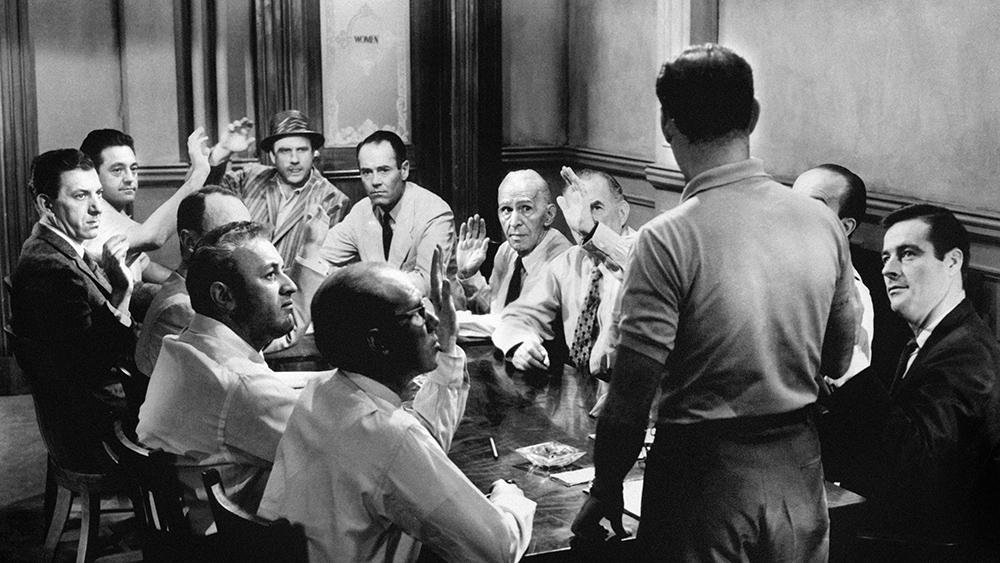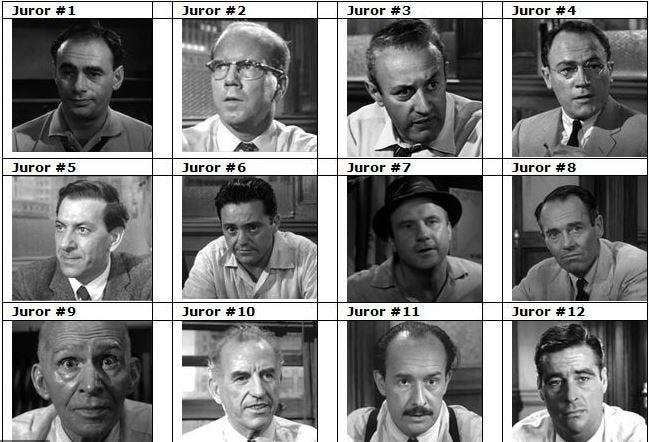Critical Analysis: Unpacking the Themes and Significance of ’12 Angry Men’ on the Big Screen
“12 Angry Men” is a timeless classic that has captivated audiences since its release in 1957. This courtroom drama, directed by Sidney Lumet, is a masterpiece that revolves around the jury deliberation of a murder case. Despite its simplistic setting, the film explores complex themes such as prejudice, justice, and the American legal system. In this critical analysis, we’ll unpack the significance of these themes and how they are portrayed on the big screen, as well as dive into the unique filmmaking techniques that make this movie a cinematic masterpiece.
“12 Angry Men” is a timeless classic that has captivated audiences since its release in 1957. This courtroom drama, directed by Sidney Lumet, is a masterpiece that revolves around the jury deliberation of a murder case. Despite its simplistic setting, the film explores complex themes such as prejudice, justice, and the American legal system. In this critical analysis, we’ll unpack the significance of these themes and how they are portrayed on the big screen, as well as dive into the unique filmmaking techniques that make this movie a cinematic masterpiece.

Introduction
When it comes to classic movies, “12 Angry Men” is definitely one that immediately comes to mind. This 1957 drama film directed by Sidney Lumet features an all-male cast and takes place entirely in one room as 12 jurors deliberate the verdict of a murder trial. The film is not only a masterpiece in terms of storytelling and acting, but it also raises important questions about justice, prejudice, and human nature. In this article, we will take a closer look at this iconic film and analyze its themes, cinematography, and performances. So, let’s dive into the world of “12 Angry Men” and discover why it continues to captivate audiences to this day.
Plot Summary
In “12 Angry Men,” a classic courtroom drama, twelve jurors must decide the fate of a young man accused of murder. As they deliberate, tensions rise and prejudices are revealed. The plot centers around the conflict between Juror 8, who believes in the defendant’s innocence, and the other jurors who are eager to convict him. As the deliberation continues, the jurors must confront their own biases and assumptions, leading to a surprising ending. This film is a powerful exploration of justice and the human condition that still resonates with audiences today.
Cinematography
Cinematography is an important aspect of filmmaking that plays a crucial role in creating a mood and atmosphere for a movie. In the case of 12 Angry Men, the cinematography enhances the tension and drama of the film by utilizing close-ups and long takes. The use of close-ups on the character’s faces allows the audience to fully understand the emotions and thoughts of each character, adding to the suspense and intrigue of the plot. Additionally, the long takes and static shots create a sense of claustrophobia, emphasizing the confined space of the jury room and the pressure the jurors feel to make a decision. Overall, the cinematography of 12 Angry Men is an integral part of the film’s success, contributing to its status as a classic of American cinema.

Acting
Acting is one of the most critical components of any movie or play. It’s what drives the story and keeps the audience engaged. In the movie 12 Angry Men, the outstanding performances by the actors are what make it a classic. The film relies heavily on the actors’ ability to convey emotion and nuance in their characters. Each actor brings their unique skills to the table, and the result is a stunning ensemble performance. It’s a testament to the importance of acting in cinema and how it can elevate a film to new heights.
Themes
When analyzing a movie like “12 Angry Men”, it is important to identify the themes that the film explores. This classic courtroom drama examines important themes such as justice, prejudice, and the power of persuasion. Each juror brings their own biases and experiences to the table, causing tension and conflict as they debate the fate of the accused. Through its characters and dialogue, “12 Angry Men” raises thought-provoking questions about the nature of truth and the role of the justice system in our society. Examining these themes not only enhances our appreciation of the film, but also invites us to reflect on our own beliefs and values.
Symbolism
In the movie “12 Angry Men”, the symbolism used is of great importance in understanding the underlying messages of the film. The setting of a hot and stuffy deliberation room symbolizes the tension and pressure the jurors are under to reach a verdict. The rain at the beginning and end of the movie symbolizes the emotional turmoil and change that the jurors undergo throughout their deliberation. The use of the number 12 symbolizes the importance of a jury’s unanimous decision. These symbols not only contribute to the overall aesthetic of the film but also enhance the viewer’s understanding of the themes and messages conveyed throughout.

Soundtrack
The soundtrack of “12 Angry Men” is an integral part of its success. The music is minimal, but it creates a tense and suspensive atmosphere that enhances the film’s drama. The score, composed by Kenyon Hopkins, uses instruments such as the piano, bass, and percussion to underline the characters’ emotions and the pace of the story. Moreover, the sound effects are also well crafted, from the opening courthouse scene to the final verdict, they add realism and depth to the storytelling. The film’s soundtrack is an example of how music can elevate a movie’s impact and make it a memorable experience for the viewers.
Reception
When “12 Angry Men” was first released in 1957, it received mixed reviews and was not a commercial success. However, over time, the film has become a classic and is now regarded as one of the greatest films ever made. The movie’s reception has been overwhelmingly positive, with critics and audiences alike praising its strong performances, taut direction, and powerful themes. The film’s exploration of justice, prejudice, and the human condition still resonates with audiences today, making it a timeless classic in the world of cinema.
Legacy
When it comes to discussing the legacy of the classic movie “12 Angry Men,” there’s no denying the impact it has had on the world of cinema, movies and actors. The film, which explores the complexities of the American justice system through the lens of a single jury room, continues to be celebrated for its intelligent storytelling, powerful performances and timeless themes. From its masterful direction to its thought-provoking script, “12 Angry Men” has cemented its place in film history as a true masterpiece. Even today, more than 60 years after its release, the movie remains a must-see for anyone interested in the art of cinema and the human condition.
Conclusion
In conclusion, “12 Angry Men” is a timeless classic that showcases the power of persuasion and the importance of justice. Through the use of a single location and a talented cast of actors, the film masterfully portrays the inner workings of a jury deliberation, highlighting the biases and prejudices that can influence decision-making. The film’s themes of prejudice, justice, and the human condition are as relevant today as they were when the film was first released over 60 years ago. “12 Angry Men” is a must-watch for cinephiles and anyone interested in the art of storytelling.
For more information about 12 Angry Men movie analysis, including movie details, cast information, etc..
check out the filmaffinity page.



